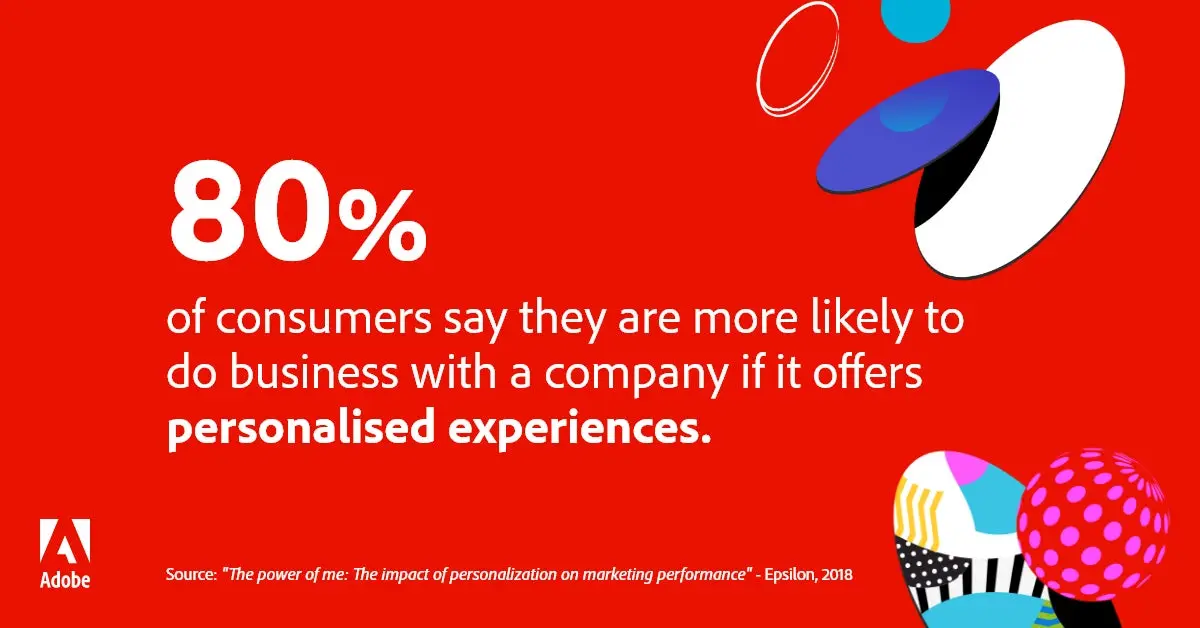Can they coexist in a cookieless world?

Privacy and personalisation are often talked about as though they are mutually exclusive. In a cookieless world, they don’t have to be.
The twin forces of personalisation and privacy are driving a rapid — and for some, radical — rethink of how brands manage the customer experience and acquire new customers in 2021.
Consumers who enthusiastically shifted to digital customer experiences during the pandemic now expect the brands with which they interact to know who they are and what they need.
At the same time, privacy regulation is increasing around the world, from the EU’s General Data Protection Regulation (GDPR) to the California Consumer Privacy Act (CCPA) and beyond. Big tech players such as Google, Apple and Mozilla are getting on board, abandoning the third-party cookies that enabled them to track consumer behaviour across the internet for years in the name of protecting the privacy of online consumers.
Consumers demonstrate some ambivalence when it comes to personalisation and privacy. Just over two in five customers are frustrated when companies fail to deliver relevant, personalised experiences; however, one in two are concerned about data privacy when they subscribe to personalised services.
The level of concern differs by market and can fluctuate rapidly: for example, 83 percent of consumers surveyed for Deloitte’s Australian Privacy Index say they are concerned by internet cookies that track their activity online for targeted marketing purposes or to sell to other companies. Meanwhile, they will happily check in to all manner of locations to provide state governments with the tracing data necessary to limit the spread of COVID-19 — a situation that would have been unthinkable prior to the pandemic.
The business value of personalisation is clear: 80 percent of consumers say they are “more likely to do business with a company if it offers personalised experiences”.
So it’s not surprising that almost one in two customer experience leaders rate delivering personalised customer experiences in real-time as the key capability to move the needle in their business, according to Adobe’s 2021 Digital Trends report.
At the same time, however, 92 percent of senior marketing executives recognise privacy as fundamental to the customer experience.
Contents
Personalisation and privacy: It’s not one or the other
Privacy and personalisation are often talked about as though they are mutually exclusive, according to Gabbi Stubbs, APAC Product Marketing Lead for Adobe’s customer data and experience management platforms, real-time CDP and Adobe Experience Platform.
But this doesn’t take into account the value exchange that personalisation provides consumers — including delivering a seamless customer experience, personalised recommendations, access to additional content or exclusive offers, and more.
“People keep talking about personalisation and privacy in binary terms,” says Stubbs. “They don’t have to be dichotomous — you can deliver exceptional experiences in a privacy-conscious setting.”
So how can digital leaders continue to reach and engage customers and deliver personalised experiences online while respecting consumer privacy?
“The key is in empowering people to choose if, when and how they participate,” says Deloitte’s Privacy and Data Protection Lead Partner David Batch.
That means developing a robust first-party data strategy that builds in governance and consent management from the start, with the understanding that that data can be augmented in an open and privacy-conscious way down the track to improve its value and useability.
“The more complex nature of these solutions and the investment required makes it critical for marketers to have a genuine focus on a first-party data audience strategy,” says Interactive Advertising Bureau Technology Lead Jonas Jaanimagi.
“This is both in terms of enabling, growing and deploying their own data assets (such as permission-based CRM records) in a privacy compliant manner but also in being able to partner with other parties to maximise the identification coverage or else make their IDs more fully and widely addressable.”
A first-party data strategy is an inherently consumer-centric and ultimately more efficient approach to customer data than relying on cookies, according to John Mackenney, APAC Practice Lead—Digital Strategy at Adobe.
“Companies have been talking about operationalising their first-party data for years,” Mackenney says. “Rather than use cookies, we’re moving to a durable ID — such as an email address or a phone number — that doesn’t really change.
“When you’re buying against cookies it’s inefficient — you can look like three different people on three different devices. But brands using known customer data to buy media should drive significant efficiencies to reach those people — they only buy them once.”
“We think there’s significant efficiencies for companies to move to that sort of model. Any organisation that has a big customer base has a better way to move forward than how they might be operating today.”
In effect, marketing to known customers remains relatively unchanged in a cookieless world. When brands have consent, they can still email them, personalise the online experience, and tailor offers according to their known attributes.
Brands are still able to conduct traditional ad campaigns and they will still be able to target small cohorts of anonymised users based on interest within the “walled gardens” of tech players such as Google and Facebook.
What will change is the way brands transform unknown users into known customers online. The ability to re-target unknown individual website visitors when they visit other sites using third-party cookies goes away, along with the behavioural and demographic insights into those audiences that cookies helped provide.
Operationalising first-party data for personalisation and privacy
A majority of brands expect to be significantly impacted by the change, according to the Adobe Digital Trends report, with six in 10 senior executives saying adapting to these new requirements will have a “disruptive effect” on their marketing.
It’s a bigger issue for brands that rely heavily on digital and programmatic advertising to bring people to them than for companies, such as telcos and banks, that already attract big audiences and have organised their first-party data for action, rather than just reporting and insights.
So what do brands need to do to update their first-party data strategy to be able to action it effectively in the cookieless era? There are three main steps:
The first step is to bring all your customer data together in one platform — either with a data management platform that integrates with your existing tools or via a unified customer experience platform.
The goal is to create a single view of the customer via an individual profile that is always up-to-date and not reliant on batch processing to provide current information.
Once your data is in one location, ensure the appropriate governance and controls around its use are in place so the data of individual customers is only used according to the consents they have given.
The easiest way to achieve this is via built-in data labelling that attaches consent information via metadata to every piece of data and then propagates it through the system.
Decide how the data will be used
Are you looking to create a seamless customer experience across all your channels, deepen your relationship with your existing customers, or accurately segment customer data so you can recommend products based on behaviour?
When you know how the data will be used, you can think about how to improve the level of consent you already have.
Brands that want to enrich their data for better customer segmentation and personalisation may then decide to match their unified customer IDs against those of other brands or publishers as part of a second-party data strategy. This enables the brand to run a campaign in the publisher’s channels to attract new customers that share similarities as their known best customers.
“We expect those relationships to get deeper,” Mackenney says. “Two brands can bring their data together and understand the overlap in their audience — for example a bank and a real estate portal — and they would both be able to target that joint group.”
Understanding the value exchange
Brands that don’t have a naturally direct relationship with their audience will need to find ways to persuade individuals to provide consent around personal information. That means offering something of value in exchange for that information, being transparent about how the data will be used, and offering customers the option of managing their individual data and consents.
Best practice for managing consent includes providing a digital portal for consumers to monitor and change their permissions, making privacy a brand differentiator. According to Deloitte: “This can increase transparency, individual control and trust – enabling you to demonstrate how you take consent seriously.”
Tourism Australia, which traditionally provides aspirational content online that inspires visitors to go to partner websites (such as travel, accommodation and entertainment providers), is working with partners, including Adobe, state tourism bodies and its digital and media agencies, to develop its own unified customer ID so it can continue to market to audiences effectively in the cookieless era.
“We’re trying to understand the value exchange of the data between all of us, what that identifier looks like to an individual user, and then what transparency and control of that data can we actually give them,” says Head of Digital Strategy and Transformation Paul Bailey.
One option might be to provide a voucher that provides access to special deals that are redeemable with partners. The visitor would be asked to provide an email address or phone number to access the offers.
Such initiatives are a sign of what’s to come, according to Mackenney. “The internet will become a more logged-in experience,” he says.
Discover how first-party data can deliver first-rate experiences. Prepare for a world beyond third-party cookies now.
Source : Adobe









